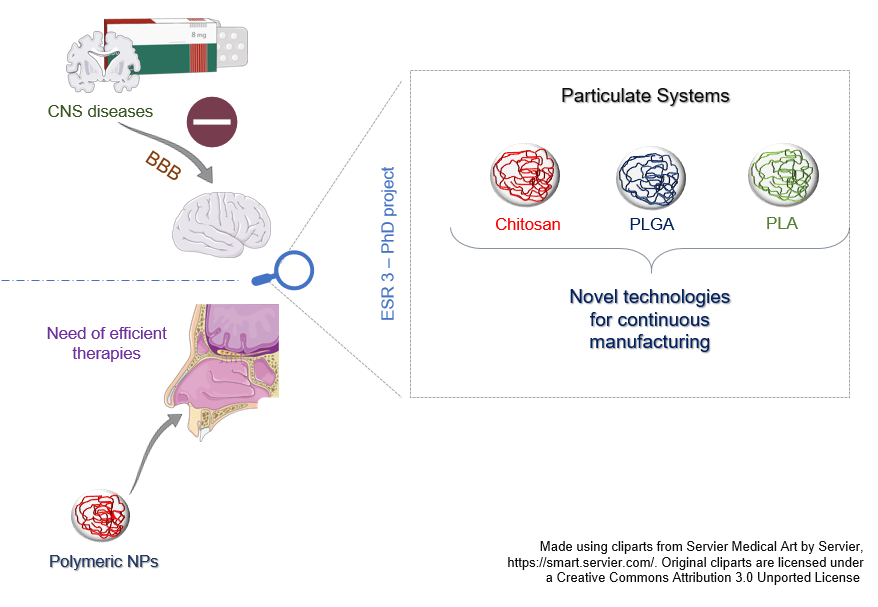Providing efficient therapies to CNS diseases is a highly complex subject due to the presence of the blood-brain barrier, which does not allow drugs to pass through the brain. To solve this problem, intranasal administration, a non-invasive method, is considered as a solution to bypass the blood-brain barrier by exploiting the direct anatomical interaction within the nasal cavity and the central nervous system. Drug delivery systems are also offering advantages to intranasal delivery by protecting the drug from degradation after the administration, and enhancing the interactions with the mucosa with tailorable surface characteristics. Overall, to combine the advantages of drug delivery and intranasal administration to provide efficient therapeutics to the central nervous system diseases, this PhD project will focus on the development of the (bio)polymer-based particulate formulations for the intranasal transmucosal delivery of biopharmaceuticals.
Throughout the project, the design and synthesis of the particulate systems will be based on the biodegradable and biocompatible synthetic polymers (such as polyesters polylactic acid (PLA), poly [lactic-co-glycolic acid] co-polymers (PLGA)) or Chitosan, a mucoadhesive natural polymer. The nanoparticles will be loaded with model substances to investigate the particle formulation parameters, followed by the loading of the monoclonal antibodies. Techniques to be used in the formulation development will not only be based on the traditional homogenisation methods but also continuous manufacturing techniques. These techniques will be investigated throughout the project to understand the insight of particle formation mechanisms and determination of the critical process parameters and their effect on critical quality attributes. Physico-chemical properties of formulations such as size, charge, drug loading, and release will be characterised by using traditional and innovative analytical tools and techniques, and further in-vitro and ex-vivo studies will be performed to evaluate the performance of these particulate systems for the delivery to the brain.
